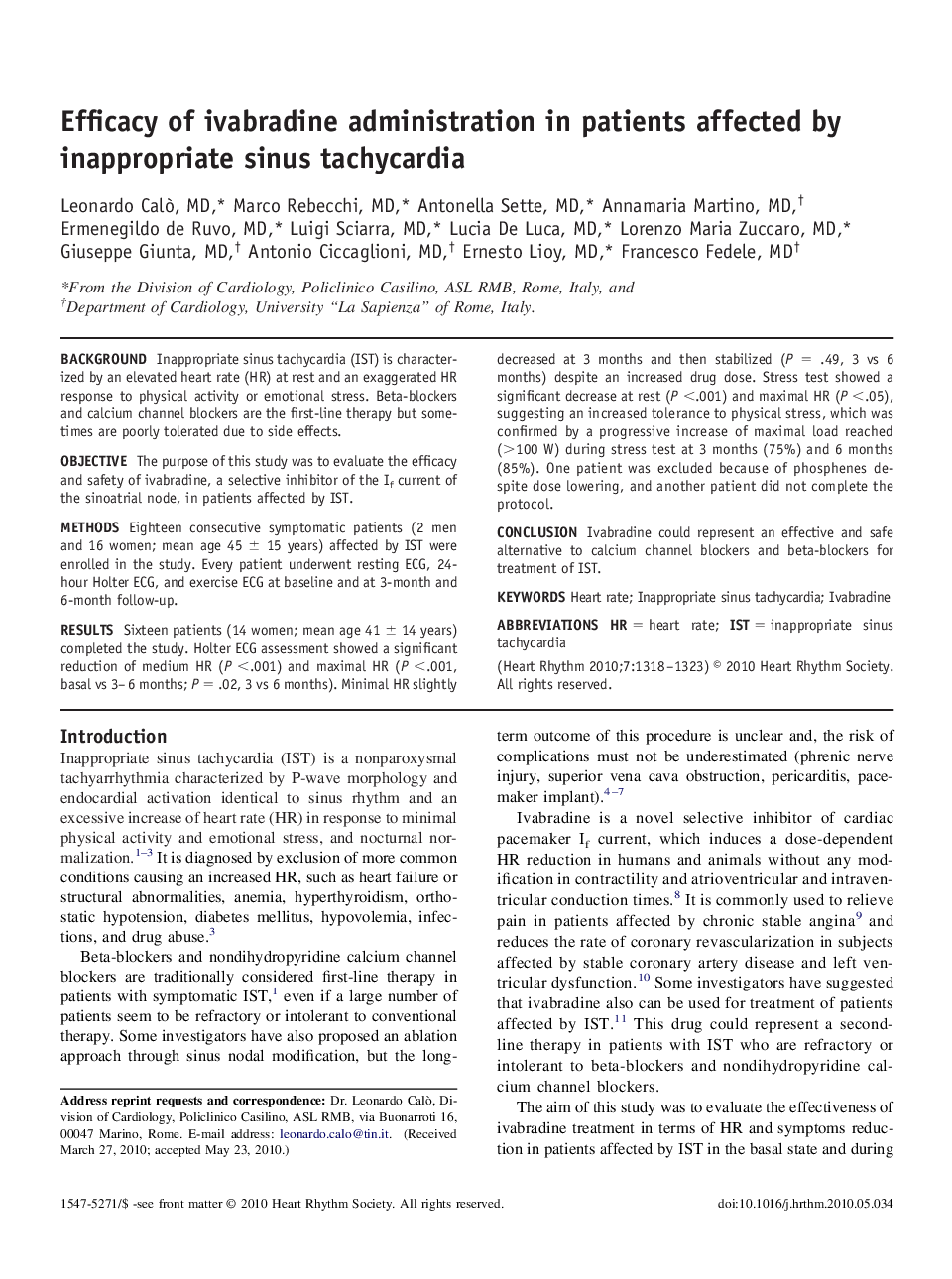| Article ID | Journal | Published Year | Pages | File Type |
|---|---|---|---|---|
| 2923460 | Heart Rhythm | 2010 | 6 Pages |
BackgroundInappropriate sinus tachycardia (IST) is characterized by an elevated heart rate (HR) at rest and an exaggerated HR response to physical activity or emotional stress. Beta-blockers and calcium channel blockers are the first-line therapy but sometimes are poorly tolerated due to side effects.ObjectiveThe purpose of this study was to evaluate the efficacy and safety of ivabradine, a selective inhibitor of the If current of the sinoatrial node, in patients affected by IST.MethodsEighteen consecutive symptomatic patients (2 men and 16 women; mean age 45 ± 15 years) affected by IST were enrolled in the study. Every patient underwent resting ECG, 24-hour Holter ECG, and exercise ECG at baseline and at 3-month and 6-month follow-up.ResultsSixteen patients (14 women; mean age 41 ± 14 years) completed the study. Holter ECG assessment showed a significant reduction of medium HR (P <.001) and maximal HR (P <.001, basal vs 3–6 months; P = .02, 3 vs 6 months). Minimal HR slightly decreased at 3 months and then stabilized (P = .49, 3 vs 6 months) despite an increased drug dose. Stress test showed a significant decrease at rest (P <.001) and maximal HR (P <.05), suggesting an increased tolerance to physical stress, which was confirmed by a progressive increase of maximal load reached (>100 W) during stress test at 3 months (75%) and 6 months (85%). One patient was excluded because of phosphenes despite dose lowering, and another patient did not complete the protocol.ConclusionIvabradine could represent an effective and safe alternative to calcium channel blockers and beta-blockers for treatment of IST.
